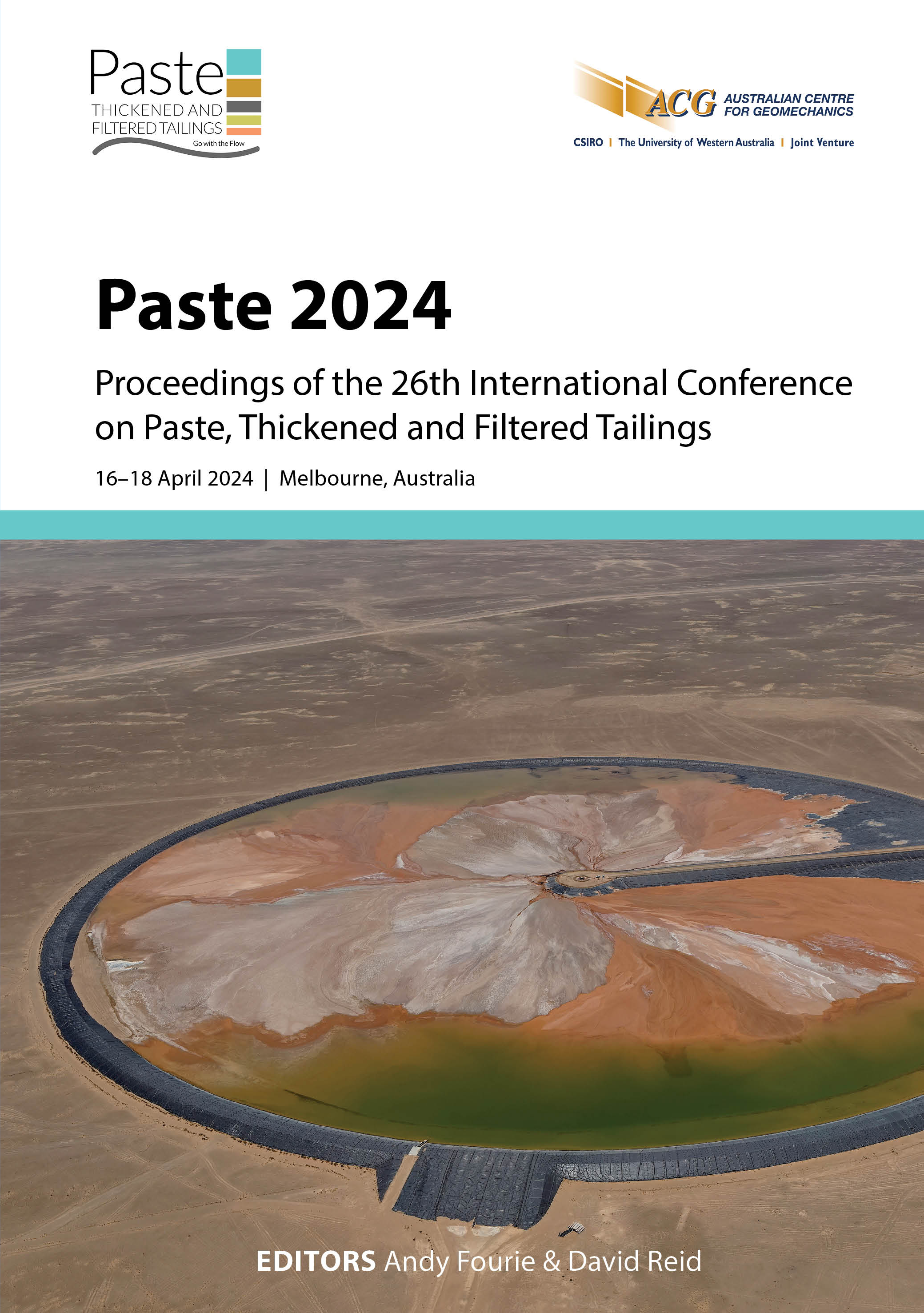Application of pipe flow lubrication for reactor feeds

|
Authors: Graham, L; Nguyen, B; Wu, J; Short, G; Harris, D; Anglin, D |
DOI https://doi.org/10.36487/ACG_repo/2455_10
Cite As:
Graham, L, Nguyen, B, Wu, J, Short, G, Harris, D & Anglin, D 2024, 'Application of pipe flow lubrication for reactor feeds', in AB Fourie & D Reid (eds), Paste 2024: Proceedings of the 26th International Conference on Paste, Thickened and Filtered Tailings, Australian Centre for Geomechanics, Perth, pp. 139-148, https://doi.org/10.36487/ACG_repo/2455_10
Abstract:
Drag reduction technology (DRT) is a useful technique to increase the solids concentration of feed into reaction vessels, such as autoclaves. The concept is to apply a lubricating film between the pipe ID and the highly concentrated slurry, which reduces wall friction, and thereby pump load. Whilst wall film lubrication is not a new concept, the application for feed into a reactor vessel is novel and CSIRO now have two client sites successfully applying this technique. The DRT design requires uniform flow of the lubricating fluid to give the best friction reduction performance, and resistance to blockage. The internal design of the DRT is optimised by computational fluid dynamics modelling to give the most uniform flow possible, as well as reasonably large internal passages to prevent blockage. The DRT is tested in the laboratory to ensure that the uniform flow requirements are met and that the pressure loss of the lubricant flow matches the calculations and simulation data. Assessment is also made as to the best location to fit the DRT on a pipe system to give the maximum drag reduction benefit. Slurry rheology and operating conditions are then used to determine the optimum operating regime in which drag reduction is useful by defining the boundary between laminar and turbulent flow for the slurry in question. Site trials have shown that benefits from the use of pipe flow lubrication include significant water savings, extension of pump operating envelopes, and increased solids loading into reaction vessels, all of which leads to improved utilisation of capital-intensive vessels such as high-pressure acid leach autoclaves.
Keywords: pipe flow, friction reduction, reactor feeds
References:
Joseph, DD, Bai, RY, Mata, C, Sury, K & Grant, C 1999, ‘Self-lubricated transport of bitumen froth’, Journal of Fluid Mechanics, vol. 386, pp. 127–148.
Secrieru, E, Fataei, S, Schröfl, C & Mechtcherine, V 2017, ‘Study on concrete pumpability combining different laboratory tools and linkage to rheology’, Construction and Building Materials, vol. 144, pp. 451–461.
Wilson, KC & Thomas, AD 1985, ‘New analysis of the turbulent flow of non-Newtonian fluids’, Canadian Journal of Chemical Engineering, vol. 63, no. 4, pp. 539–546.
Wu, J, Graham, L, Harris, D, Short, G & Bruckard, W 2020, ‘Improved paste pumping to HPAL storage tank at Murrin Operations’, ALTA 2020, ALTA Metallurgical Services.
Wu, J, Wang, S, Graham, L, Parthasarathy, R & Nguyen, B 2011, ‘High Solids concentration agitation for minerals process intensification’, AIChE Journal, vol. 57, no. 9, pp. 2316–2324.
© Copyright 2025, Australian Centre for Geomechanics (ACG), The University of Western Australia. All rights reserved.
View copyright/legal information
Please direct any queries or error reports to repository-acg@uwa.edu.au
View copyright/legal information
Please direct any queries or error reports to repository-acg@uwa.edu.au
